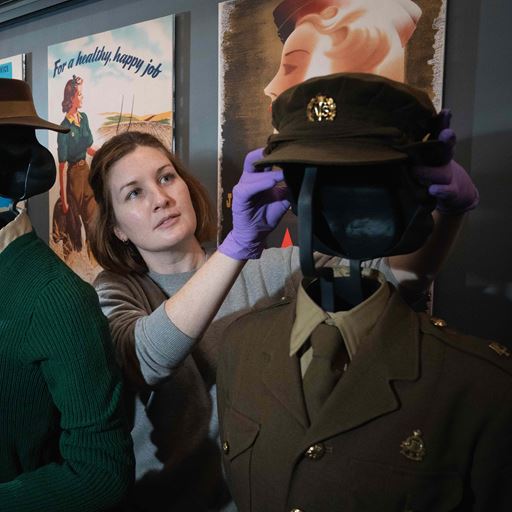Historian’s advice informs new national WWII exhibition
-
Date
Thu 21 Oct 21

An Essex historian has played a critical role in the design and development of the Imperial War Museum’s new Second World War and Holocaust galleries, which opened this week.
Professor Lucy Noakes was one of eight members of the Museum’s Academic Advisory Board. She said the new exhibitions successfully illustrate that “this was not Britain’s war alone.
Professor Noakes - a social and cultural historian with expertise on the home front and memories of war - helped the curatorial and design team realise their ambition to create an accessible exhibition that told the complex global story of the War and its relationship to the Holocaust, whilst ensuring personal individual stories were not forgotten.
The new galleries span two floors and are three times the size of the Museum’s award-winning First World War exhibition.
“In Britain we still like to think of the War in terms we associate with David Low’s famous ‘Very Well, Alone’ cartoon, which shows a pugnacious British soldier alone on the White Cliffs of Dover. But of course, Britain had the largest Empire in the world, and all its resources to call on, and the Soviet Union and United States were crucial in the eventual defeat of the Axis powers,” said Professor Noakes.
“The Second World War is pretty ubiquitous in British culture and has become a handy touchstone for politicians and other commentators who want to urge us to show the 'blitz spirit',” she added.
“The new galleries dispel these myths, showing that the War was global, complex and interconnected, but managing this through a beautiful combination of individual stories. The relationship between individual lives, and global forces are central to the narrative. I hope that visitors leave with the knowledge that this was not Britain's war alone, and that the Second World War was much larger, and perhaps much more interesting, than they had realised.”
"I hope that visitors leave with the knowledge that this was not Britain's war alone, and that the Second World War was much larger, and perhaps much more interesting, than they had realised."
It’s the individual stories that Professor Noakes is most proud of: “My focus on 'history from below' meant that I was keen that individual voices and lives be represented through the exhibition. They have real meaning for some visitors.”
The new galleries, which make the Imperial War Museum the first in the world to house dedicated Second World War and Holocaust Galleries under the same roof, also challenge the view that anti-Semitism was solely a German phenomenon, something Professor Noakes was very keen to achieve.
“The opening gallery includes a copy of a British fascist newspaper The Britisher which was protesting about the presence of German refugees in 1930s Britain. Perhaps some visitors will see the contemporary parallels,” she said.
Find out more about the new galleries.
Header image courtesy of the Imperial War Museum Second World War Galleries.
.jpg?mh=500&mw=500&hash=6568B6C9CCF5290A596BEF6678B6AD0E)



